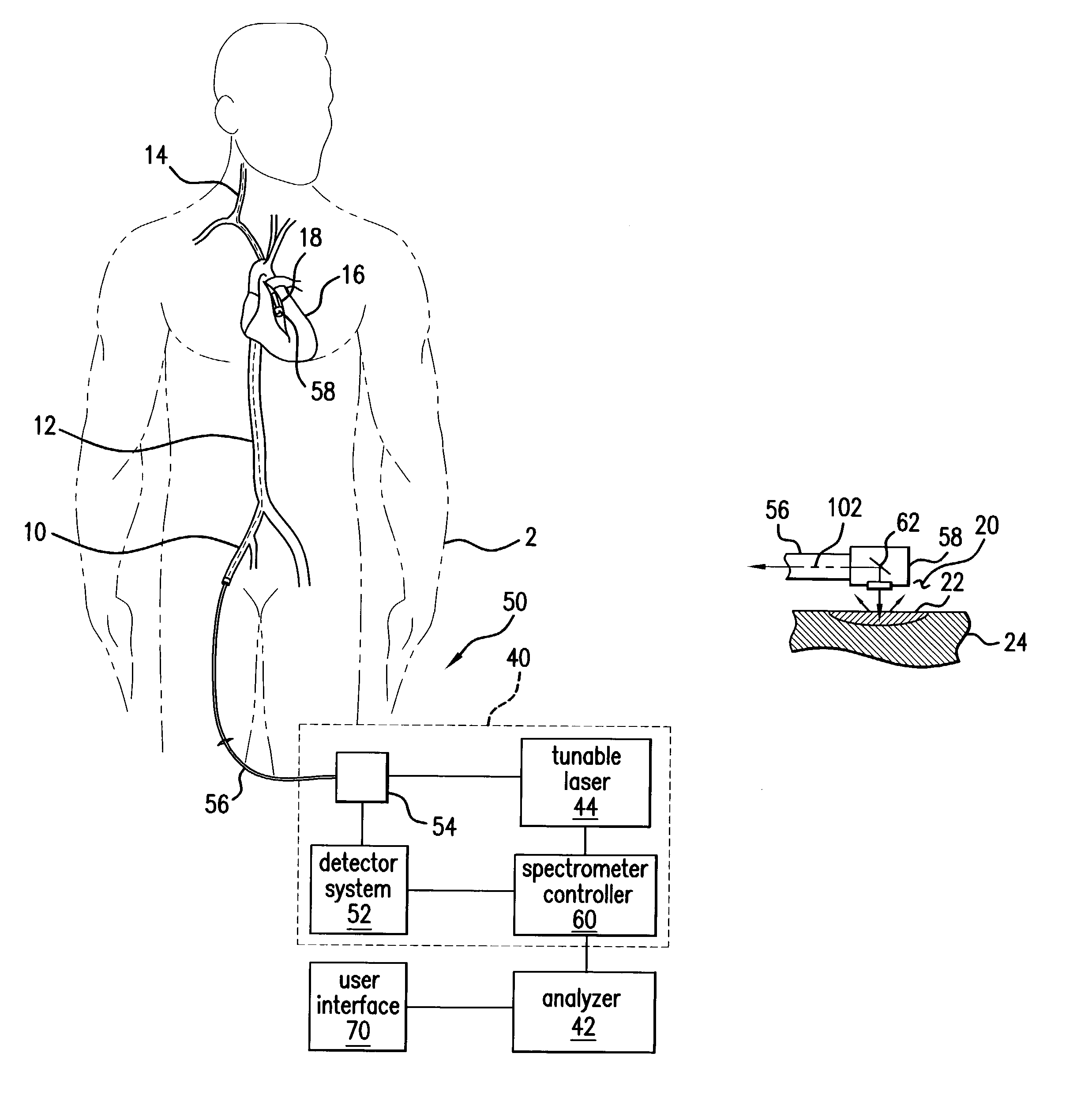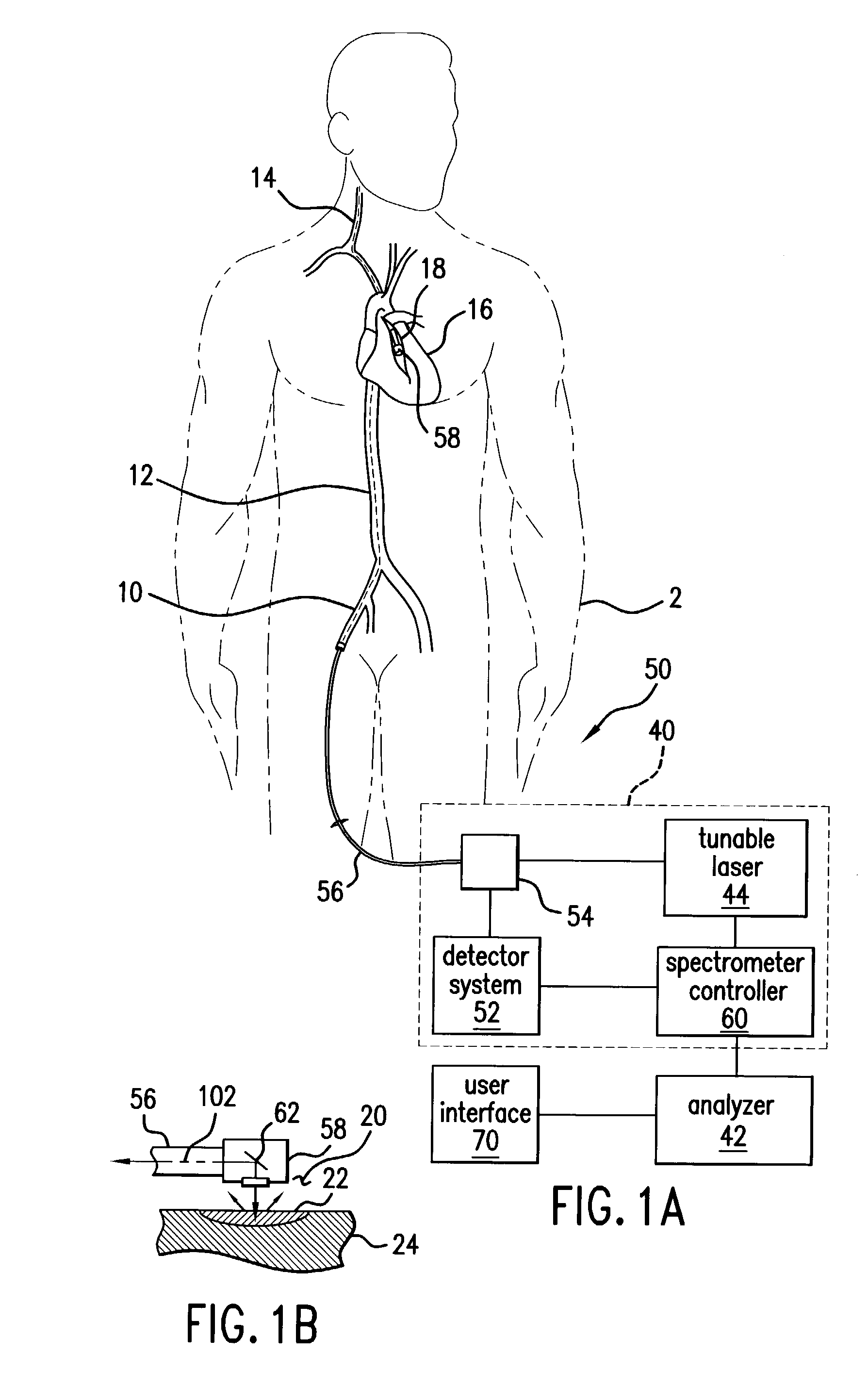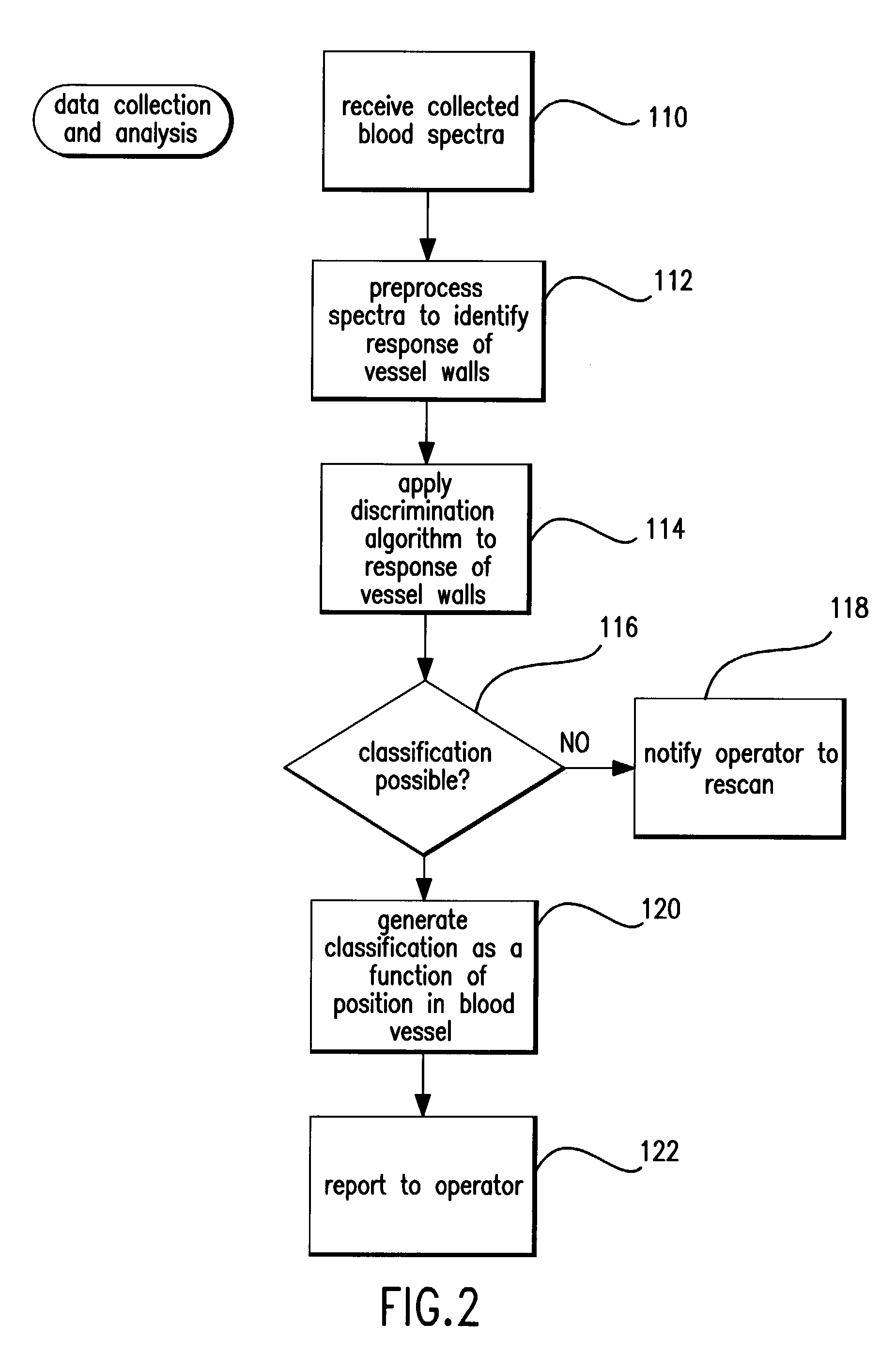Spectroscopic unwanted signal filters for discrimination of vulnerable plaque and method therefor
a spectroscopic unwanted signal and plaque technology, applied in the direction of spectroscopy, angiography, instruments, etc., can solve the problems of not being able to control the conditions under which the spectral data are acquired, the path length of any optical signal through the blood is not necessarily highly controlled, and the path length of any optical signal through the blood can also be quite long, so as to improve the spectral response of the lipid pool signal and the effect of more robust models
- Summary
- Abstract
- Description
- Claims
- Application Information
AI Technical Summary
Benefits of technology
Problems solved by technology
Method used
Image
Examples
Embodiment Construction
[0047]The present invention addresses the generation of spectral data in vivo and the mathematical manipulation or filtering of that data in order to extract or determine a portion of the spectrum that results from structures of interest, which here are the blood vessels walls. Finally, the state of vessel walls is assessed based on this extracted or determined spectrum, such that the system either generates a conclusion as to the state of the vessels or the extracted or determined spectral response from the data is supplied to the operator, who generates the conclusion.
[0048]A number of techniques or technologies are currently contemplated for generating the spectral data. Generally, spectroscopy is the science of the measurement of electromagnetic radiation as it is absorbed or emitted by molecules or their atoms as they move from one energy level to another. When a molecule is subjected to radiation, the atoms can absorb a portion of the radiation at frequencies corresponding to ...
PUM
| Property | Measurement | Unit |
|---|---|---|
| distance | aaaaa | aaaaa |
| depth | aaaaa | aaaaa |
| depth | aaaaa | aaaaa |
Abstract
Description
Claims
Application Information
 Login to View More
Login to View More - R&D
- Intellectual Property
- Life Sciences
- Materials
- Tech Scout
- Unparalleled Data Quality
- Higher Quality Content
- 60% Fewer Hallucinations
Browse by: Latest US Patents, China's latest patents, Technical Efficacy Thesaurus, Application Domain, Technology Topic, Popular Technical Reports.
© 2025 PatSnap. All rights reserved.Legal|Privacy policy|Modern Slavery Act Transparency Statement|Sitemap|About US| Contact US: help@patsnap.com



